
views
- Put food coloring in the tank to find where the water is coming out if you can’t figure out where the leak is.
- To replace the flush valve holding the flapper in place, remove your tank and install a new set of gaskets where the opening feeds into the tank.
- If the leak is in the tank, you likely need to replace the fill valve or tighten the two gaskets at the bottom of the tank.
Finding the Source of the Leak
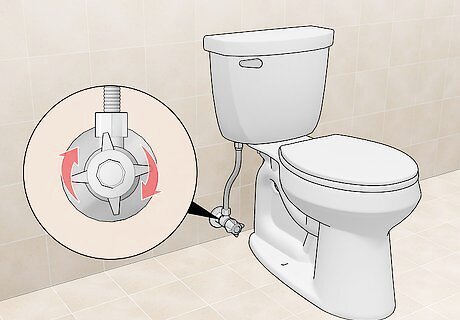
Turn off the water supply if you don’t know where the problem is. Locate the shutoff valve in the back of the toilet, below the tank. It’ll usually be connected to a pipe coming out of the wall, although it may feed into the floor. Turn this valve clockwise as far as you can to turn the water off. You can skip this process entirely if you know where the water is leaking from.
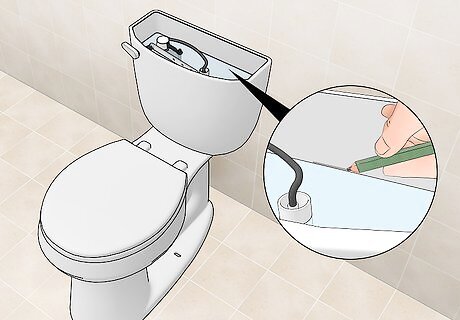
Mark the water level in the tank with a marker. Put the mark at the highest point where the water sits in the interior wall of the tank. This will help you identify if the water in the tank rises or falls over time. For best results, use a permanent marker. If you use a pencil, rising water levels may wash away the mark away.

Add coloring or food dye to the water and wait 10 minutes. Add a dye tablet or a few drops of food coloring to the water in the tank. Dyeing the water will help you follow where the water is going so that you can identify the leak. Wait for the dye to spread a few minutes before doing anything.
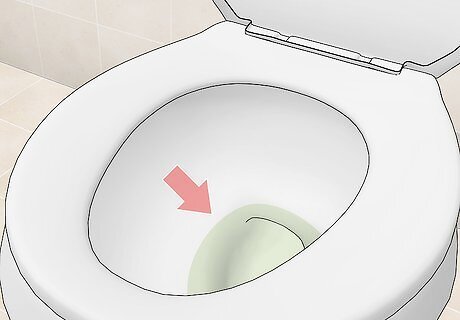
Check the water in the toilet bowl to see if it’s dyed. If the water in the bowl has any trace of the dye you put in the tank, the water in the tank has leaked into the bowl. This means the cause of your leak is a faulty flush valve. If you have a damaged flush valve, replace it.
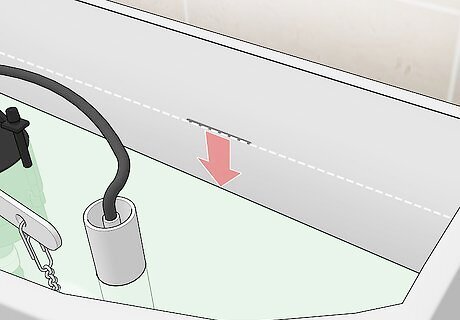
Look to see if the water level in the tank has gone up or down. If the water has risen, this means there’s probably something wrong with the fill valve. If the water has gone down, there’s probably a leak in your flush valve. If the water level has gone up, check to see if there’s any water in the overflow tube (you’ll hear it draining normally). This indicates that the fill valve is leaking.
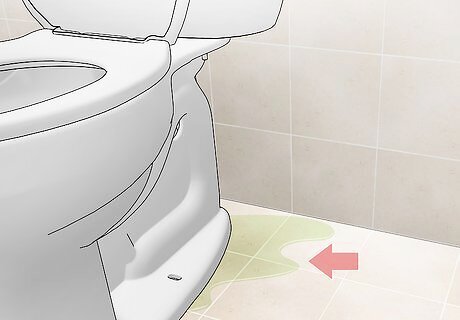
Check if the dyed water from the tank has leaked onto the floor. If dyed water has seeped out from the bottom of the tank and onto the floor, this probably means you’ve got a leaky gasket. If dyed water has come out of the body of the tank, the tank itself may be cracked. Tip: Toilets may develop condensation on the exterior of the tank during hot weather or when you’re taking a very hot shower. This “tank sweat” is harmless. Unfortunately, if the tank is cracked, it will have to be completely replaced. If you're not sure exactly what part of the toilet assembly you need to replace, just buy a kit with all new parts and replace everything. They're pretty inexpensive and it will save you a lot of time.
Flush Valve
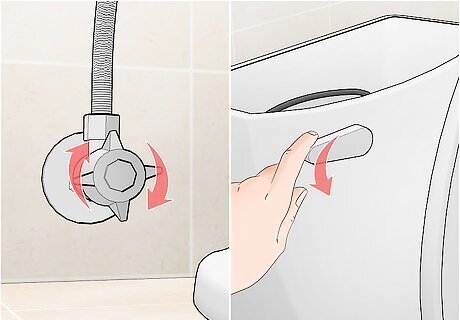
Turn off the water supply to the toilet and flush it. Drain all of the water out of the tank. If you can’t flush the toilet for some reason, you can also use a cup or a hose to remove the water from the back of the tank.
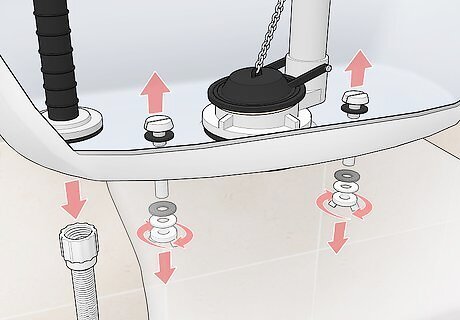
Remove the nuts attached to the supply tube and toilet bowl. The tank is attached to the wall by the supply tube and attached to the toilet bowl by two bolts underneath the tank. Use an adjustable wrench to loosen and remove these nuts so you can remove the tank. You may need to use a flathead screwdriver to hold the bolts in place as you turn the nuts under the tank.
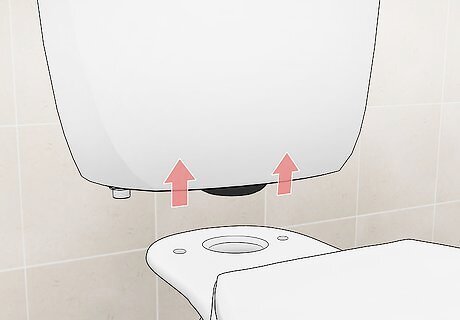
Lift the tank off of the bowl once the nuts have been loosened. Place the tank upside down next to the toilet bowl on a stable surface. If you want to avoid water getting on the floor, put some towels down and place the tank on top of these. Placing the tank upside down will give you direct access to the flush valve on the bottom of the tank.
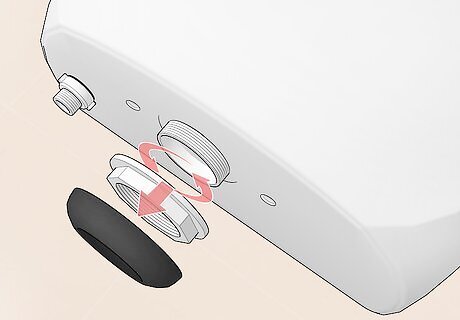
Unscrew the locknut on the bottom of the tank and remove the valve. This is the large nut, called a spud washer, in the middle of the tank that holds the flush valve in place. Once you’ve unscrewed the spud washer, simply push on the flush valve to pop it out. The spud washer is normally the culprit when it comes to a leaky flush valve. Unfortunately, you can’t normally replace the spud washer alone. You need a whole new valve with a perfectly-fitting washer. If you’re encountering a lot of trouble, use a plumber’s wrench to unscrew the locknut.

Place the new flush valve in the spot where the old valve was. Push the new flush valve down against the tank opening to install it. Follow the manufacturer’s instructions to ensure you install the new valve properly. You can buy a new flush valve at any retailer that sells home improvement supplies.
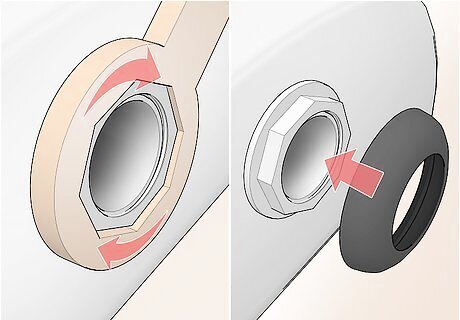
Tighten the locknut with a monkey wrench to complete the installation. Reattach any parts of the flush valve that you disconnected when you were removing the old one. Be sure to replace the gasket over the locknut, as well.
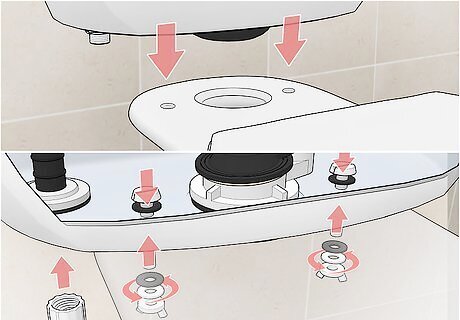
Place the tank back on the toilet and secure the bolts. Tighten the nuts that you previously loosened that affix the tank to the supply tube and to the toilet bowl. Once the tank has been reattached, turn the water supply back on and refill the tank. Once the installation is complete, flush the tank to ensure that the leak is fully gone. If it isn’t gone, check to make sure the leak isn’t coming from somewhere else. If water is still leaking into the toilet bowl, go back and make sure you’ve fully tightened the bolts attached to the flush valve.
Fill Valve
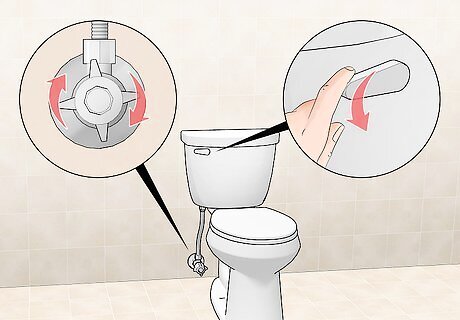
Turn off the toilet’s water supply and remove the water from the tank. Turn the water supply valve in back of the toilet all the way clockwise to turn off the supply. Remove the water from the tank by flushing the toilet once the water’s been turned off. You can also use a cup or a shop vac to get the water out of the tank.
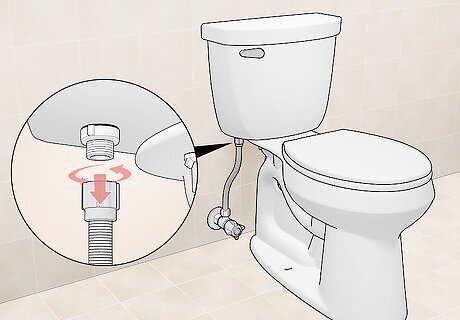
Disconnect the water supply line behind the tank. This is the tube immediately beneath the location of the fill valve on the bottom of the tank. Use a wrench to turn this tube counterclockwise to disconnect it. Depending on your toilet model, the supply line will either be a long, rigid pipe or a short tube connected to the water supply shutoff valve. Put a towel or bucket under the supply line if you want to keep your floor dry. There’s probably a little water left in your supply line.
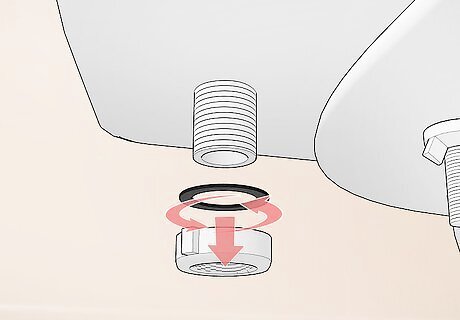
Unscrew the locknut attached to the fill valve on the bottom of the tank. This is the nut located underneath the tank that holds the fill valve in place. Use a small wrench or pair of pliers to loosen and remove the locknut.

Remove the old fill valve through the top of the tank. Take the lid off of the top of the tank, if you haven’t already. Pull the old valve directly upwards in order to remove it from the tank. Make sure your tank is bone dry if you want to avoid a mess! If you remove the fill valve with water still in the bottom of the tank, that water will fall out of the hole where the fill valve used to be and end up on the bathroom floor.
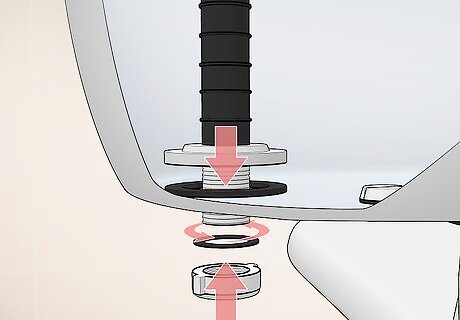
Place the new fill valve in the tank and install it per the instructions. Set the new fill valve in the spot where you just removed the old valve and screw the locknut onto the bottom of it. Attach the refill tube to the side of the fill valve and orient it over the overflow tube in the tank. Note that you will need to adjust the float to match the height requirements for your new fill valve.

Reattach the water supply tube behind the tank and turn the water on. Once the water supply has been turned back on, flush the toilet to test the new fill valve. If it fills correctly and doesn’t overflow, it’s fixed and you're good to go! If you’re still experiencing problems with water leakage, your toilet may have a more serious problem. Call a plumber to have them diagnose the problem and see if it can be repaired.
Tank Gaskets

Turn off the water and empty the water out of the tank. Turn the water supply valve behind the toilet clockwise to turn off the water supply. Once the water’s been turned off, flush the toilet to empty out the tank. You can also use a cup or a shop vac to get the water out of the tank.

Locate the bolts in the tank that connect the tank to the bowl. These are the 2 bolts at the very bottom of the tank. Look on either side of the flapper to locate the heads of the bolts. Look underneath the tank to find the corresponding rubber washers.
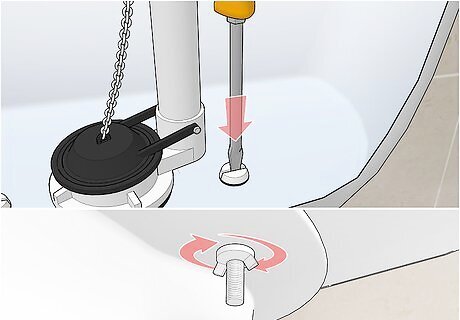
Use an adjustable wrench and screwdriver to tighten these bolts. Use a flathead screwdriver to hold the bolts in place. Then, use the adjustable wrench to turn the bolts clockwise underneath the tank. Continue tightening the bolts until you feel a heavy amount of resistance and it becomes difficult to hold the screwdriver still. Don’t tighten the bolts so hard that you end up cracking the porcelain tank. If that happens, you’ll have to replace the entire tank.
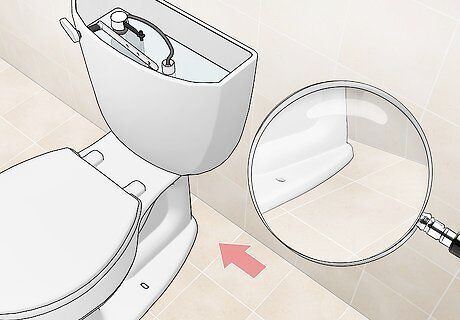
Refill the tank and check for leaks coming from the bolts. Turn the water supply back on to allow the tank to refill. Wait a few minutes, then look underneath the tank to see if it’s still leaking. If there’s no more leak, the gasket has been fixed. If the gaskets still leak, replace them with a fresh set of gaskets.




















Comments
0 comment